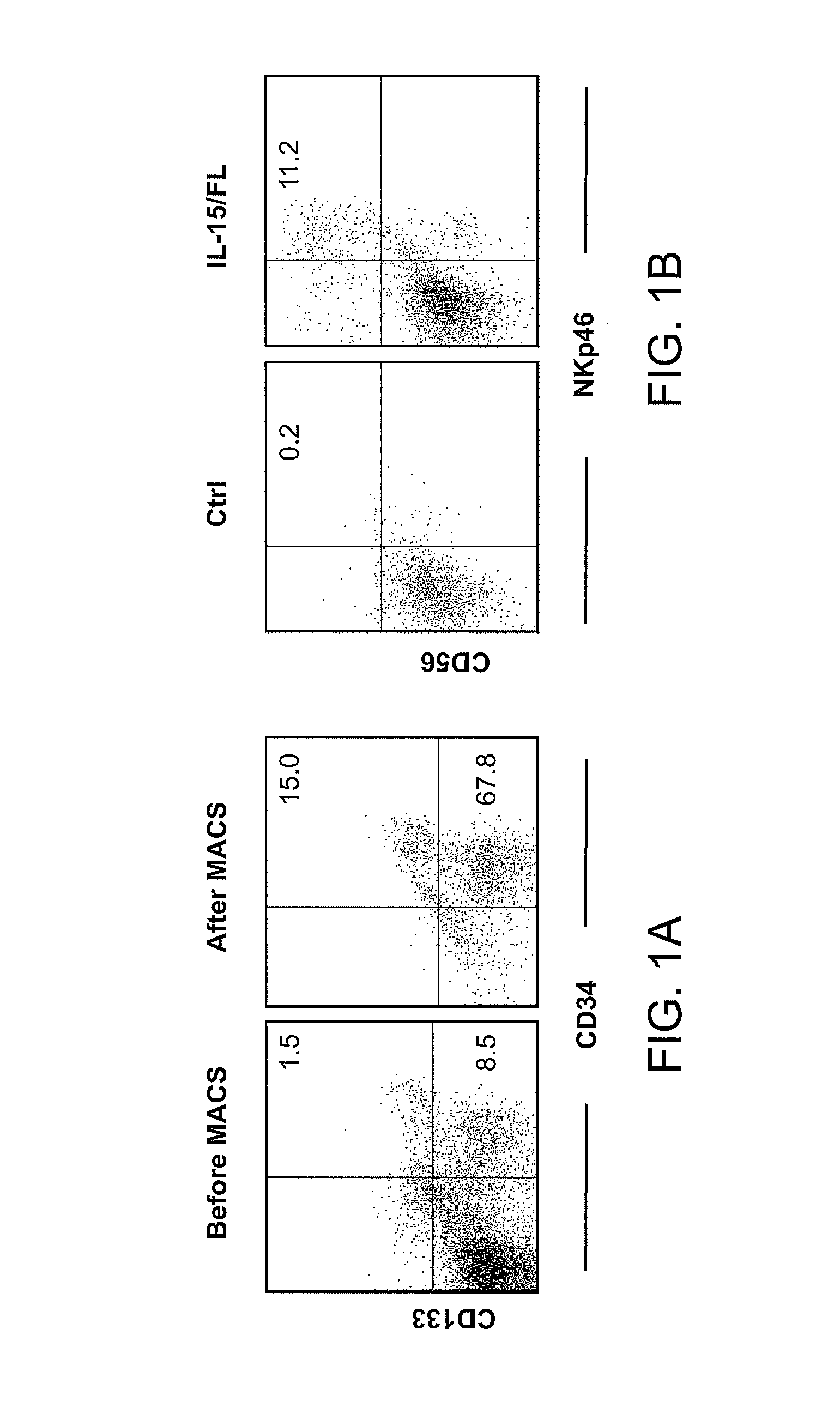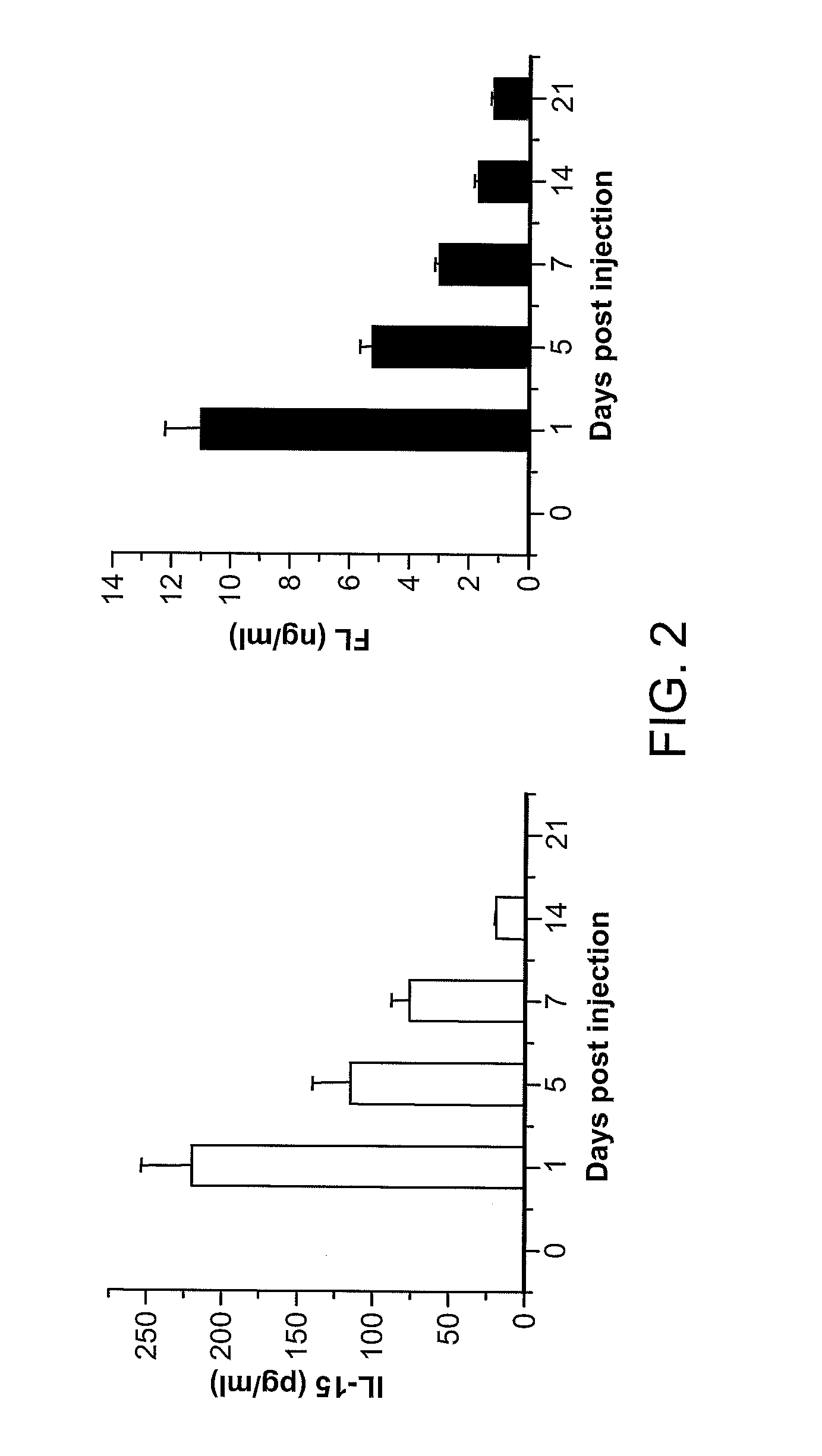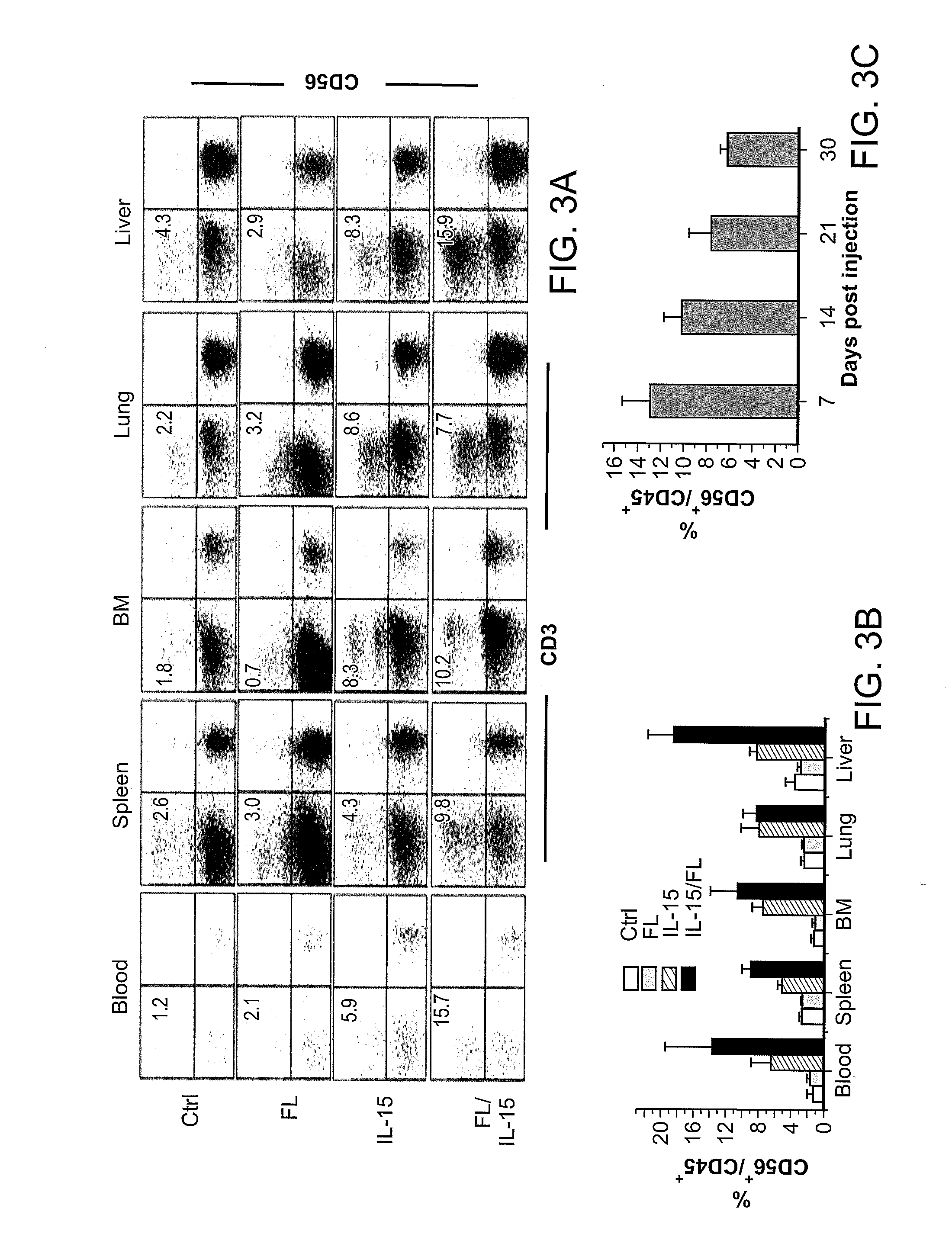Methods Of Producing Humanized Non-Human Mammals
a non-human, humanized technology, applied in the direction of fused cells, peptides, antibody medical ingredients, etc., can solve the problem of poor reconstitution of human blood cell lineages by human hematopoietic stem cells (hscs), and achieve the effect of simple and efficien
- Summary
- Abstract
- Description
- Claims
- Application Information
AI Technical Summary
Benefits of technology
Problems solved by technology
Method used
Image
Examples
example 1
Expression of Human Cytokines Dramatically Improves Reconstitution of Specific Human-Blood Lineag Cells in Humanized Mice (Humice)
Materials and Methods
[0099]HSC Isolation, Construction of Humanized Mice, and Hydrodynamic Gene Delivery. Human cord blood was obtained from Singapore Cord Blood Bank. Cord blood mononuclear cells (MNCs) were separated by Ficoll-Hypaque density gradient. CD34+ cells were purified with the RosetteSep® system according to the manufacturer's protocol (Stein Cell Technologies). The purity of CD34+ cells was >95%. To expand HSCs, purified CD34+ cells were cultured for 11 to 14 days in serum-free medium in the presence of defined factors (Zhang C C, Kaba M, Iizuka S, Huynh H, Ladish H F (2008) Blood 111:3415-3423). Both unexpanded and expanded HSCs were used to generate humanized mice.
[0100]NSG mice were purchased from the Jackson Laboratories and maintained under specific pathogen-free conditions in the animal facilities at Nanyang Technological University and...
example 2
Expression of Human Cytokines Improves Reconstitution and Function of Human T and B Cells in Humanized Mice
[0121]The reconstitution of human T and B cells is reasonable in humanized mice, but they don't exhibit optimal functions. For example, although human CD8+ T cell response has been detected following viral challenges, the functions of CD4+ T cells are abnormal; human B cell mediated antibody response is absent in humanized mice. As shown herein, the abnormality of human T and B cell response is also due to the poor cross-reactivity between mouse cytokines and human cells in mice. Shown herein is that injection of human GM-CSF and IL-4 encoding plasmids into humice led to the improved reconstitution of human CD209+ dendritic cells, which is considered to be the major antigen presenting cells for T cells. Furthermore, IL-4 also was shown to promote cell proliferation, survival, and immunoglobulin class switch to IgG and IgE in human B cells, and acquisition of the Th2 phenotype b...
PUM
| Property | Measurement | Unit |
|---|---|---|
| time | aaaaa | aaaaa |
| frequencies | aaaaa | aaaaa |
| areas | aaaaa | aaaaa |
Abstract
Description
Claims
Application Information
 Login to View More
Login to View More - R&D
- Intellectual Property
- Life Sciences
- Materials
- Tech Scout
- Unparalleled Data Quality
- Higher Quality Content
- 60% Fewer Hallucinations
Browse by: Latest US Patents, China's latest patents, Technical Efficacy Thesaurus, Application Domain, Technology Topic, Popular Technical Reports.
© 2025 PatSnap. All rights reserved.Legal|Privacy policy|Modern Slavery Act Transparency Statement|Sitemap|About US| Contact US: help@patsnap.com



